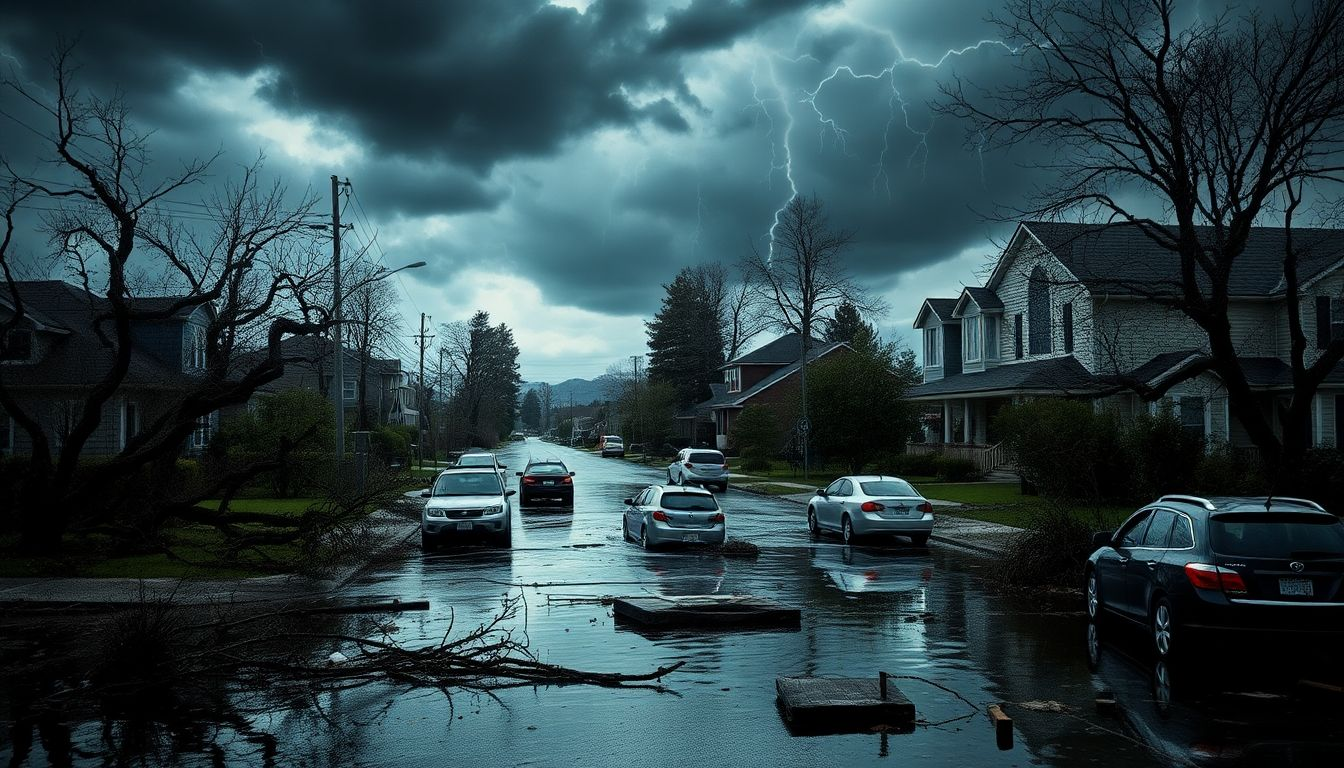Climate Change and Its Impact on Home Insurance Rates
Warming temperatures, wildfires, and floods aren't only eco concerns—they're tapping homeowners' wallets as well. This story reveals how climate change is fueling home insurance rate hikes, rewriting coverage terms, and remaking risk calculations. Discover what homeowners should know—and how to remain safe as the climate crisis worsens.

Introduction
Home insurance premiums continue to increase, and climate change is a major contributor. As more frequent severe storms, floods, and fires become the norm, insurers have to pay out more. These disasters impact all homeowners. Whether you're purchasing your first home or juggling several properties, it's essential to know how climate change influences insurance premiums. It can assist you in preparing and making better decisions regarding your coverage.
Understanding Climate Change and Its Impact on Natural Disasters
The Science Behind Climate Change
Global warming is altering our weather patterns. It occurs when greenhouse gases trap additional heat in the atmosphere. This added heat energizes more powerful storms, longer-lasting droughts, and more powerful fires. When the climate changes, so does the weather we feel every day. These changes increase the likelihood and severity of natural disasters.
Increasing Frequency and Severity of Disasters
In the last few decades, there has been a consistent report of growing big storms, floods, and fires. The National Oceanic and Atmospheric Administration (NOAA) verifies that the hurricanes are growing in intensity and frequency. The United Nations' Intergovernmental Panel on Climate Change (IPCC) also reports an increase in intense weather events due to climate change. Local governments such as FEMA encounter increasing disasters that necessitate expensive responses year after year.
Examples of Recent Disasters and Their Economic Impact
Hurricane Harvey flooded Houston in 2017, inflicting more than $125 billion in damages. Several homes were destroyed or damaged, resulting in massive insurance claims. California wildfires in 2020 consumed thousands of homes and cost billions. Such disasters put pressure on insurance companies, driving premiums up to meet future risks.
How Climate Change Is Driving Up Home Insurance Rates
Increased Claim Frequency and Severity
When disasters strike more frequently and do more damage, insurance claims increase. Insurers pay out more funds when houses are destroyed by floods, fires, or storms. To offset these increased costs, they increase insurance premiums. This means homeowners pay more for the same protection.
Geographic Variations in Premiums
Certain areas have more climate risks than others. Gulf Coast states, for instance, contend with hurricanes, while California battles wildfires. They experience larger jumps in insurance rates. If you reside in a high-risk area, your insurance premium will probably be higher. Local climate danger directly determines the amount you pay.
Insurance Companies' Response and Risk Assessments
Insurers are changing how they determine coverage costs. They now use new climate models and data trends to see how risky an area is. Some are even refusing coverage in places with too high a risk. This means your premium might go up if your home is in a flood-prone or fire-prone area.
Rising Reinsurance Costs and Their Effect
Reinsurance is insurance of insurance firms. As catastrophes rise in frequency and scale, reinsurance becomes more pricey. Insurers pass this increased expense on to consumers in the form of higher premiums. The cycle feeds upon itself, and eventually home insurance becomes less affordable.
The Future of Home Insurance in a Warming World
Forecasted Trends in Insurance Premiums
Experts project premiums to rise even higher as climate change persists. Some reports indicate rates will rise 10-25% during the next several years. Regions struck hardest by disasters might experience even greater increases. Anticipate increased costs, particularly in areas experiencing regular bouts of severe weather.
Policy Changes and Insurance Industry Adaptation
Insurance companies are modifying policies to manage new threats. Insurers are writing tighter standards on houses, such as fire-proof roofs or flood-resistant foundations. Some insurers provide new coverage products or exclusions for climate damages. Homeowners must know what is included and excluded.
Effect on Homeowners and Buyers
Increasing insurance premiums make home purchasing or ownership more difficult. Increased premiums can cost hundreds or thousands of dollars annually. To be frugal, homeowners can look into climate-resilient upgrades. Installing storm shutters, elevated foundations, or fire-resistant materials can reduce risks and potentially insurance premiums.
Actionable Strategies for Homeowners and Buyers
Risk Mitigation Tips
Simple steps can protect your home and reduce insurance costs. Seal basements and install flood barriers. Clear dead trees and brush around your property to prevent fires. Regular home inspections can identify vulnerabilities early.
Insurance Shopping and Policy Evaluation
Compare policies carefully before buying. Look for coverage options that fit your needs and check for climate-related exclusions. Sometimes paying a little more saves big in the long run.
Standing up for Policy and Community Resilience
Show your support for local initiatives to enhance flood defense and fire resilience. Encourage your representatives to invest in climate-resilient infrastructure. Common efforts lower risk for all and can stabilize future insurance premiums.
Conclusion
Climate change directly affects homeowners insurance premiums. Increasingly intense and frequent natural disasters result in more claims and premiums. By staying informed about such changes, homeowners can better prepare. Investing in safety and reading policies can be cost-saving and investment-protecting. It's certain: together, governments, insurers, and homeowners have to keep pace with a rapidly changing climate in order to protect homes and make them affordable.

Your comments